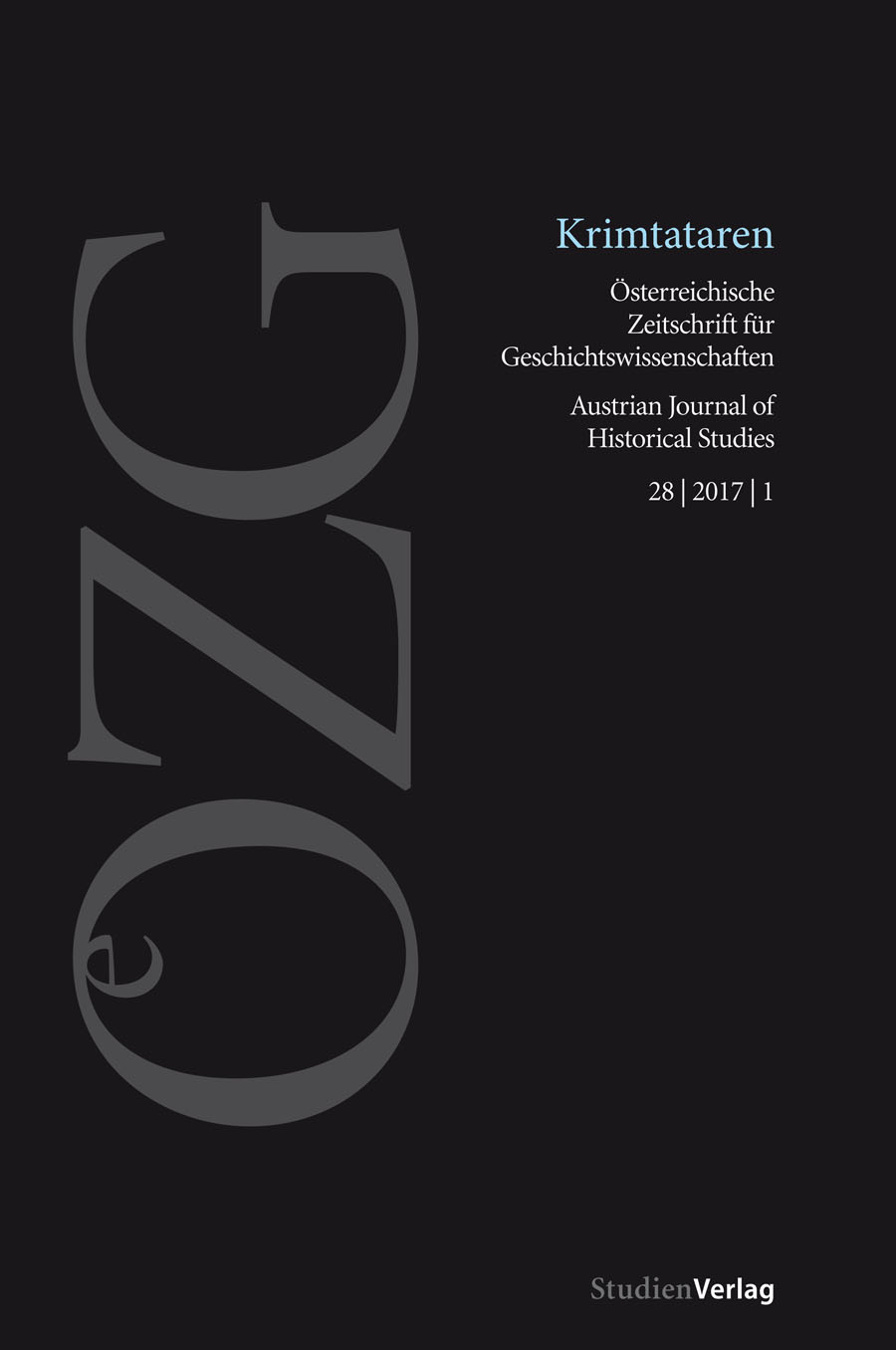Ein Krimtatare in Zentralasien
Ismail Gasprinskij, der Orientalismus und das Zarenreich
DOI:
https://doi.org/10.25365/oezg-2017-28-1-6Schlagworte:
Gasprinskii, Orientalism, Tsarist Empire, Crimea, Central AsiaAbstract
Crimean Tatar Exile Networks between Eastern Europe and the Middle East. Along with the Crimean Peninsula and the Romanian region of Dobrugea, Istanbul became an important center of Crimean Tatar culture and political activity from the end of the nineteenth and throughout the twentieth century. Crimean Tatar activists promoted the idea of Crimea’s cultural and then political autonomy and protested against the mass deportation of the Crimean Tatar population by the Soviet authorities in 1944. Cafer Seydahmet, the brothers Ismail and Ibrahim Otar, Abdullah Zihni Soysal, Sabri Arikan, Yusuf Uralgiray and many others launched publicist and political campaigns for the promotion of the Crimean Tatar cause. The aim of this article is to analyse the numerous networks and interrelations between Crimean Tatar exiles with their compatriots and other Turkic and European intellectuals, orientalists and other scholars between Crimea, Constanta, Istanbul, Paris, Warsaw and other parts of the world. The study is based on the investigation of several Crimean Tatar emigrant archives in Istanbul, mainly the Otar-Collection (the archive of Ismail Otar), and the private collections of Bilge Otar and Kaan Öztürk.


